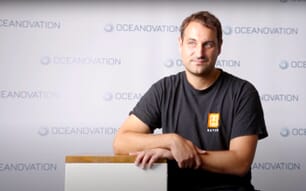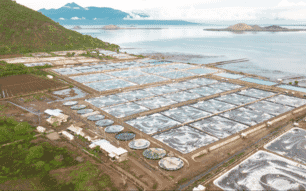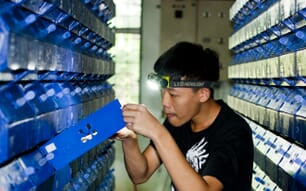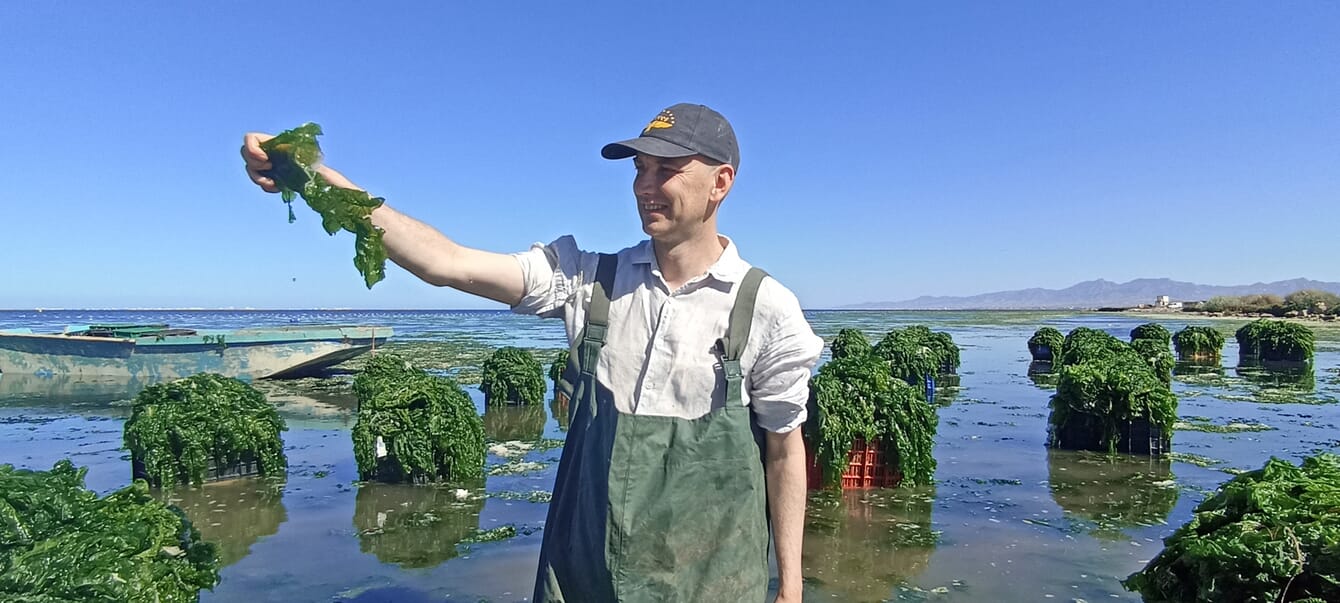
A visit to India – a potential powerhouse of seaweed production, which only cultivates a few thousand tonnes a year – proved an instructive start to the year for Hermans.
“It helped me understand the issues India has in terms of seaweed production. The potential is there, and there has been a lot of progress in the last nine months. But the industry, academia and the government need to work together – they’re not really talking to each other in the right way. Bureaucracy has been a major issue but it seems that the government are now making a bit more effort: it needs someone at the top to make it happen,” he reflects.
“On the processing side India has a lot of knowledge: they have the chemical engineers, the laboratories are up there with the best. They have the manpower and the brains to make whatever you want out of seaweed but now it’s about getting the biomass in. They’re currently very reliant on biomass from Indonesia, but that comes with its own political risk – Indonesia may want to keep the biomass inside the country in the future. The government has recently banned the export of several unprocessed minerals, if they do the same with seaweed it could become an issue for everyone buying seaweed. They would have to set up a plant in Indonesia itself – which comes with its own set of challenges,” he adds.
This shortage of seaweed biomass is not unique to India and Hermans suspects that it will reduce the number of startups in the sector, following an upsurge in their numbers.
“If all the startups that emerged during Covid were to be successful then there will be a real shortage of seaweeds. There does seem to be a race to lock in supply. Talking to small-scale farmers from Malaysia to Madagascar, they all have been contacted by bioplastics startups looking to secure biomass,” he explains.
It’s a symptom of the fact that far too high a percentage of these startups are looking at the same parts of the seaweed supply chain.
“We’ve had a lot of focus on the applications side over the last few years – it’s where the new cool things are happening – but there’s really not been enough investment or entrepreneurial energy in the production side of things. And there’s been a decline in traditional producing regions – through factors such as warming waters, poor prices and extreme weather. In tropical countries the water is heating up and there’s no real solution. People are trying to develop climate-resistant cultivars, but this won’t happen overnight,” notes Hermans.
“In the meantime growers are using the same old systems that evolved in the 1970s, and haven’t really developed since,” he adds.
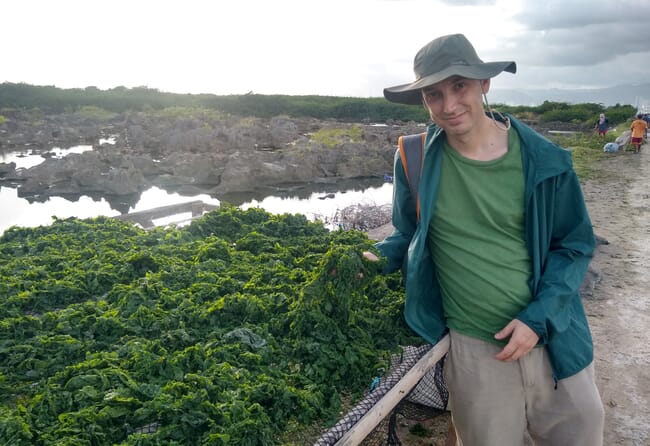
Factors such as warming waters, poor prices and extreme weather have resulted in a decline in production in traditional seaweed producing regions, such as the Philippines
Meanwhile, attempts to increase cultivation in the West have proved less successful.
“In the new geographies, like Europe and North America, there has been lots of research money going in to develop seaweed cultivation but at the moment the volumes are still very low. Everyone wants to buy seaweed but not at the price it’s currently delivered at. The price needs to come down via production efficiencies, but there’s not enough work being done on that. If seaweed is going to fulfil its promise the price will need to come down,” he argues.
According to Hermans the return on investment for means to improve seaweed cultivation is not sufficient to attract investment from venture capital.
“It's challenging to build a business model that's attractive to investors based solely on seaweed production. On the other hand, starting a vertically integrated company from scratch is equally challenging,” he reflects.
“Part of the solution could be a combination of grants, loans and concessionary capital, more patient capital. But there really isn’t enough of that going around – especially from people who have an understanding of, and interest in, seaweeds,” he adds. "That's why, in the near future, I think we will see downstream companies starting to fund seaweed production to a greater extent themselves to ensure sufficient supply,” he adds.
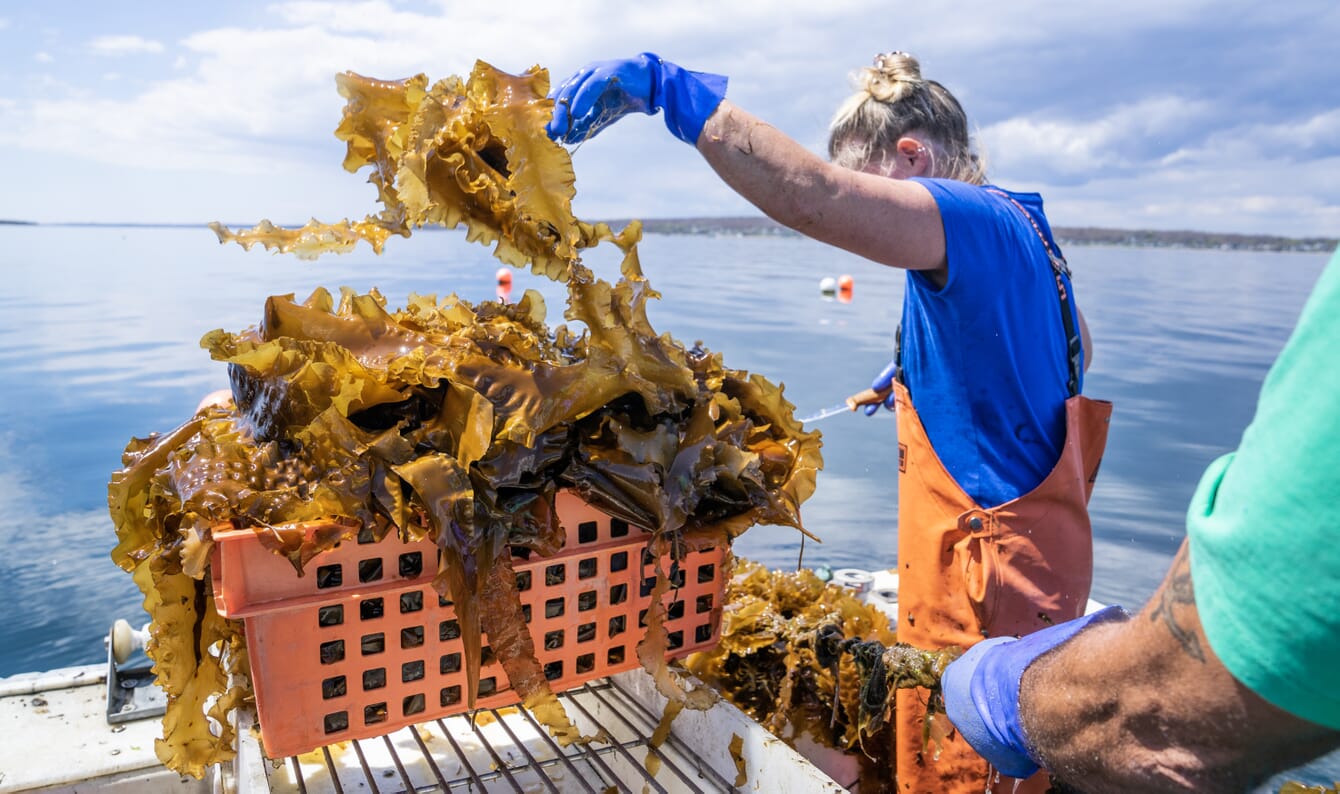
Along with the species Macrocystis and Kappaphycus, Hermans is starting to see an increased use of sugar kelp in the biostimulants market © Rhody Wild Sea Gardens
Biostimulants and beyond
In terms of uses for seaweed, 2023 was first and foremost the year of biostimulants, according to Hermans.
“The war in the Ukraine and inflation suddenly made the rise in fertiliser prices an issue and governments around the world, as well as startups who had been doing other things in seaweed, started to look towards biostimulants. It’s a $1 billion business and it’s growing at about 13 percent CAGR, so it makes sense and the timing is good,” he explains.
Hermans also notes that there’s been an element of diversification in this part of the seaweed sector.
“We’ve seen a greater variety of species being used for biostimulants. Before Ascophyllum and Laminaria dominated the market but now Macrocystis, Kappaphycus and even sugar kelp are entering the mix to a greater extent. New producers are popping up in places like East Africa, which previously shipped its seaweeds to Europe or China to make carrageenan but are now starting to make biostimulants and add value themselves," he observes
Hermans has also taken note of the acquisition of a number of more established biostimulant companies by large agro-chemical companies - for example Mitsui, which bought C-Bio back in March.
“It’s raised interest, as people see there’s an exit strategy for these companies,” he notes.
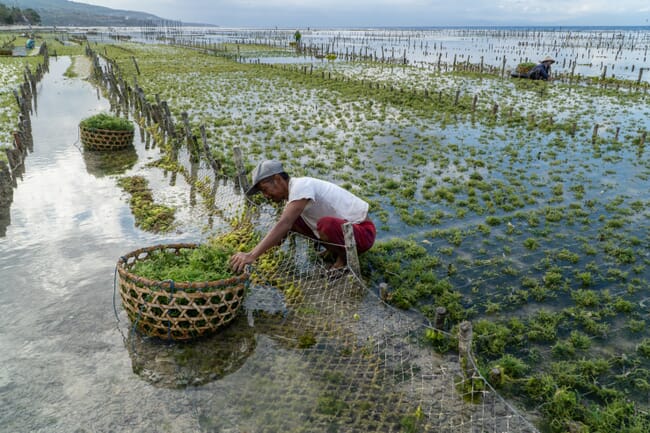
A recent development Hermans has noticed in the seaweed industry is the selling or developing of seaweed-based additives for shrimp feed – an area that he sees being a reliable market for seaweed producers © Shutterstock
The other area that has done well this year, according to Hermans, relates to the development of seaweed-based additives for shrimp feeds.
“It’s something that no one was doing two years ago, but now there are at least five companies who are either selling or developing seaweed-based shrimp feed additives. All are very positive about it: the market’s there and they’re getting good results. People are saying that they have brought some farmers shrimp ponds back from the brink and the shrimp producers are willing to spend the extra money if it works,” he explains.
Looking ahead
Looking towards the future Hermans thinks that seaweed biorefineries are poised to make a meaningful breakthrough in the short to medium term.
“About 10 were started in around 2020, mainly in Europe and North America, and they are now moving from the R&D phase to the pilot scale. They take a bit longer to scale up but they’ve had quite a bit of investment and we’re seeing progress in terms of green chemistry and the development of a business model that relies on alginates and high-value molecules like fucoidans and beta-glucans to drive the profit, while the lower value components (biostimulants once again) can also be sold off,” he explains.
He also thinks that bioplastics sector is reaching a critical point, although he predicts that there will be a few casualties along the way.
“At one point I was monitoring over 50 bioplastics startups. Some have not got beyond the R&D phase, but there are still too many. Now that the easy money has dried up and it’s time to prove themselves, we will see who are going to be the winners and gain extra funding,” Hermans reflects.
In terms of using seaweed for food, Hermans has noted a change in emphasis.
“There are still cool new food companies coming online but there’s going to be a shift towards food ingredients. The space for seaweed as a hero ingredient, when it’s prominent on the packaging and included at 30 percent, is likely to remain a niche. But there’s more room for adding small proportions of seaweed into mainstream products for big companies. That way you can easily move a couple of hundred tonnes,” he explains.
“It’s taken a long time for those contracts to come in: there was a mismatch between what food companies wanted and what suppliers could provide, both in terms of volume and quality. But the processing infrastructure is coming online now and the discussions with big companies are starting to reach their conclusion. So I think that in 2024 we will see announcements about bigger companies using seaweeds in their products and that will drive the bottom line for a lot seaweed producers in Europe and North America. It’s likely to be low inclusion rates – for ‘health by stealth’ products – rather than prominent placement on the packaging,” he adds.
Hermans is hopeful that some of these deals are completed swiftly.
“The money is running out for many seaweed producers, they are on the knife’s edge, so it will be important that they sign some of these contracts otherwise they will start to fold. It’s difficult to predict who will make it but some definitely will,” he forecasts.
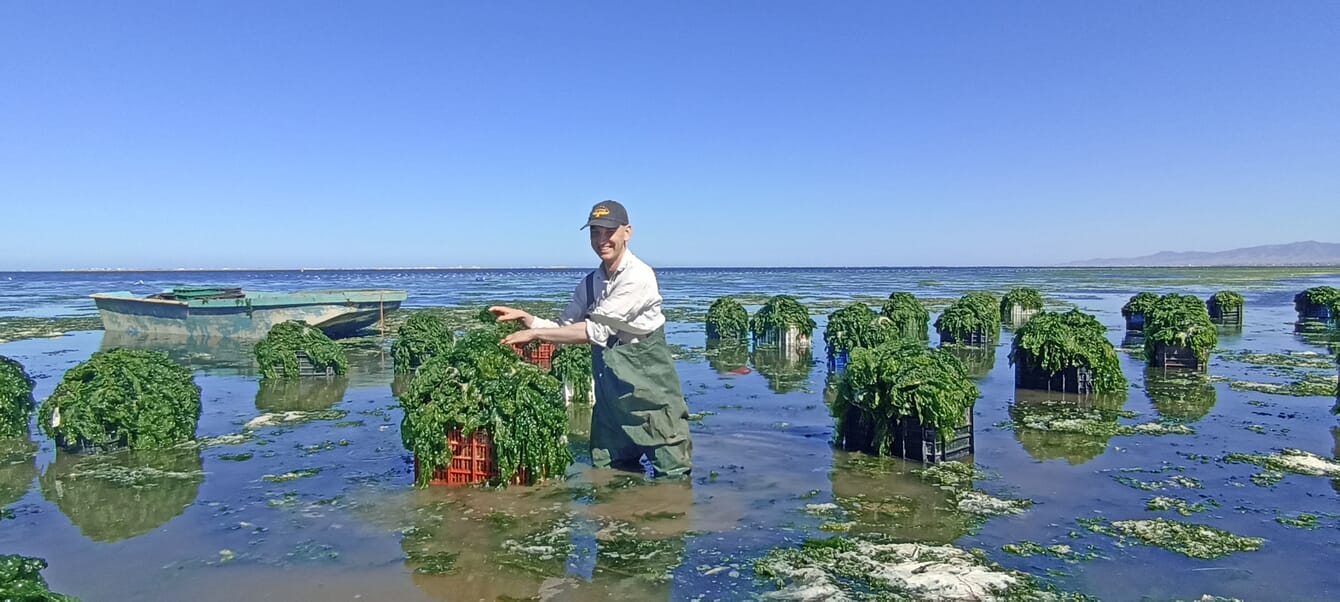
After three years working with seaweed producers in North America, Africa and Europe, Hermans is now based in Asia to understand what’s going on in this major seaweed-producing region
Personal plans
On a more personal level, having been based largely in the West for the last few years, Hermans now plans to spend more time in the epicentre of seaweed production.
“I’ve spent the past three years having a good look at what’s happening in Europe, North America and Africa. It’s been interesting but also a bit ridiculous – knowing that almost all of the seaweed is produced in Asia. But I’m in Asia now and planning to travel around and understand what’s going on here. I think that a lot of the interesting innovation is happening in Europe and North America but it’s kind of pointless if there isn't a good connection to the biomass here in Asia. I want to make those connections a bit stronger in the future,” he concludes.


